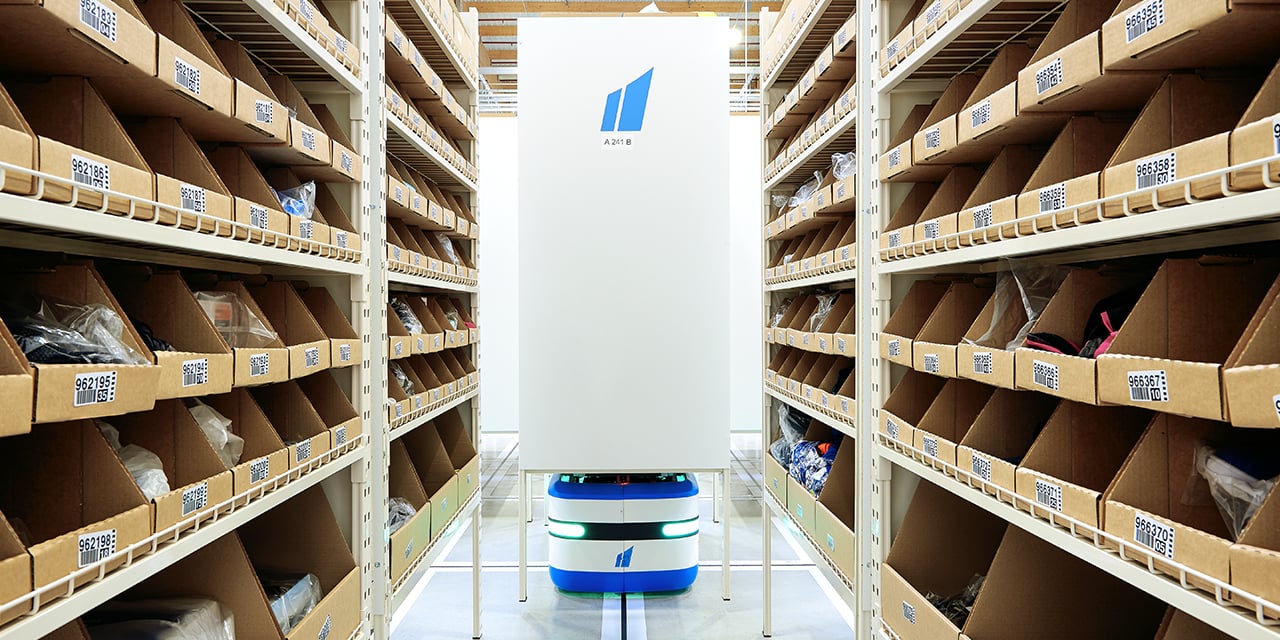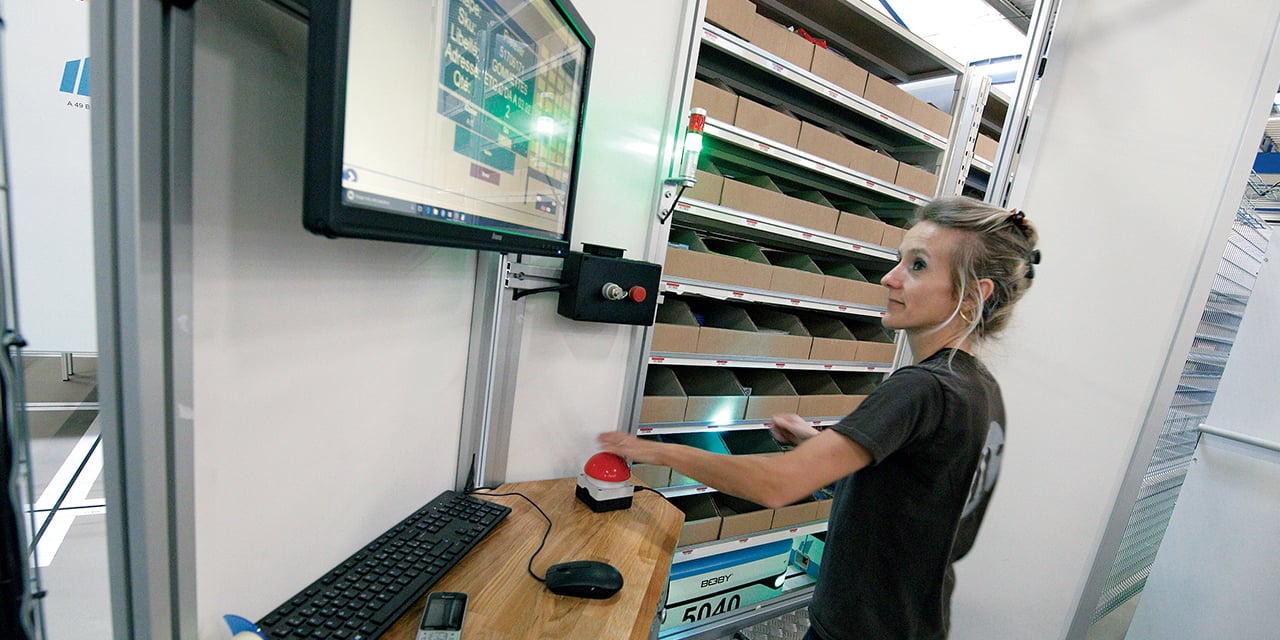E-commerce reached almost 150 billion euros in France in 2022. Double-digit growth, up 13.8% on last year..
In the space of a few years, it has become a regular mode of consumption for a large majority of Internet users, who appreciate the convenience, speed and efficiency it offers (buy any type of product at any place and time etc.).
Supply chain optimization, and workflow management in particular, plays a key role in the success of e-merchants. In this article, we examine the 5 key factors for boosting your logistics performance, from order picking and returns management to the more traditional KPIs.

The 3 major logistical challenges for e-commerce
Logistics in e-commerce: to buy or not to buy
According to FEVAD, 9 out of 10 Internet users in France buy stuff online: that’s 38.8 million consumers. Price and availability aren’t the only operative factors though. Others are important too, and can make the difference when it comes to deciding whether or not to buy:
- Delivery deadlines,
- Security of means of payment,
- Delivery options,
- Easy return of products
- Order tracking and customer service.
Logistics performance is a key issue in e-commerce, as good performance helps satisfy and retain customers.
Logistics in e-commerce: a matter of economics
E-commerce players need to find the best balance between profitability and service, faced with consumers who want the right product at the right time and in the right place;.
At every stage of the supply chain, the costs of warehousing, order picking, packing, labelling and shipping must be optimized while guaranteeing the responsiveness, reliability and quality demanded by consumers.
As a key factor in the economics of e-commerce, good logistics helps reduce management costs and optimize margins - and therefore profits.
Last-mile logistics: a wealth of savings opportunities
The logistics of the “last mile” are a real headache for e-commerce. Meeting the conditions of sale - home delivery in 48 hours, delivery to the workplace, collection points etc. - represents, on average, 20% of the cost of a package.
Therefore, e-commerce players have equipped themselves with FMS solutions to optimize their transport logistics and workflows and reduce their costs and delivery times.
They now need to optimize the delivery routines of their carriers, the last link in the movement of goods, aligning schedules and local delivery points to reduce travel times and mileages.
Order reliability, customization and fast delivery, real-time parcel tracking, quality of packaging and even returns management are all criteria that will impact the customer's satisfaction and, as a consequence, loyalty.
One statistic from the Institut français d’opinion publique (IFOP) speaks for itself: if the original buying experience is positive, 98% of online shoppers say they’ll buy again from the same website!
The 5 key factors for boosting logistics performance
Optimized picking of low-turnover products
In a warehouse designed for e-commerce, where the items which sell most are the easiest to reach (according to the 80-20 ratio of the Pareto principle), order picking consists of collecting, grouping and shipping small quantities of items to individual customers.
Product picking is a time-consuming and resource-intensive activity, and requires not only good planning (with the help of a WMS) but optimization of the product picking trajectory. Operators travel, on average, between 10 and 15 kilometres a day!
Operators follow a picking list and to optimize their routes they have to pick several orders simultaneously, from best-sellers as well as low-turnover products . Guaranteeing a wide choice of products for the consumer means holding many low-turnover products, which are a source of productivity losses and picking errors.
Automating order picking for low-turnover products with a SCALLOG solution, coupled with efficient stock management, can result in a 70% increase in productivity and logistics efficiency.

Control comes first at packing stations
As we saw, most errors occur during order picking and packing. Tighter controls at this stage reduce such errors and reduce returns, which erode margins.
Automating the packing function makes it faster and more reliable, especially when combined with a weight check, which accurately determines quantities according to volumes of product.
In the world of DIY, for example, screws are sold individually, in bags of 10, in small cases or even in boxes; operators need guidance to avoid unnecessary manoeuvres and errors in the labelling, picking and packing of goods.
Automated weight control in SCALLOG picking stations before packaging further increases productivity and improves service quality.
Delivery information in real time
Real-time track and trace of packages is increasingly standard practice in the logistics of e-commerce.
According to IPSOS, 95% of online shoppers want to be informed in real time of the delivery status of their orders via SMS or e-mail, while 61% have encountered problems with late deliveries or failure to deliver in the indicated time slot. For deliveries, where large volumes of products require customers to be at home to receive them, real-time information is crucial.
Sharing reliable information on the status of stock and deliveries via a stock management solution interfaced with a website is a necessity in the face of demanding and impatient consumers.
Efficient returns management
Returns management in e-commerce is a game of unknown quantities, and a real challenge in terms of process and logistics costs. In France, 24% of products sold online are returned, according to FEVAD. And a striking figure is that 88% of online shoppers consult the returns policy before buying.
Returns management is a logistical and commercial challenge that requires an effective strategy to accelerate processing, whatever the reasons for return (shrinkage, malfunction, failure), so they can quickly be put back on sale.
Automating your returns management processes makes it possible to densify product storage, optimize picking, and accelerate onward processing (stock, supplier etc.). As proof of this, one of our customers has increased the productivity of its returns management by 8 times after deploying a SCALLOG solution.

Robotics as a lever of flexibility and efficiency
In today’s world of activity spikes and ever-changing consumer demands, only automation - and goods to man robotics in particular - can deliver flexibility and efficiency in order picking and returns management.
Our solution guarantees e-merchants the ability to step up or dial down their logistics operations according to the changing needs of their business or distribution centres, optimizing reliability and productivity while reducing the burden of work for operators. With goods to man solutions, the storage shelves go to the operators, who are guided in all their picking and packing operations.
The result: a threefold increase in productivity, thanks to faster order processing and a 30% reduction in storage space.
In e-commerce logistics, workflows can vary from one day (or week, or month) to the next. And activity spikes - end of year festivities, Black Friday and so on - are increasingly frequent.
E-commerce itself is changing as consumer behaviour and buying habits evolve: as witness the growth of B2B, micro-niches, immersive marketing, supply diversification etc. Therefore, the e-commerce supply chain has to be able to adapt to these changes with agility and flexibility by optimizing every post-order process, regardless of the diversity of the products moved, at the best possible OTD rate.
As an e-commerce player, you need to invest in scalable solutions with rapid ROI for your distribution centre. Your store, and your ability to meet your pledges as an e-merchant, are only as good as your logistics
Agility, flexibility and scalability are at the heart of SCALLOG's automation solutions - specially designed to boost the performance of e-commerce logistics.



Laisser nous votre commentaire